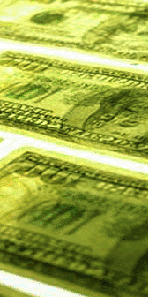
 |
THE CHAORDIC ORGANIZATION: OUT OF CONTROL AND INTO ORDER
World Business Academy Perspectives - Vol. 9, No. 1 1995 by Dee W. Hock Dee Hock is founder and CEO Emeritus of VISA USA and VISA International. He has lectured throughout the world on innovation, quality, and the changing nature of commercial, social, and political organizations. He is one of thirty living Laureates of the Business Hall of Fame. It is almost impossible these days to read a business article or participate in a seminar without stumbling over such popularities as "learning organizations," "empowerment," or "reengineering." It is equally common to encounter in the scientific community the study of complex adaptive systems, commonly referred to as "complexity." I find it cumbersome to either think or write about fundamental principles underlying both physical systems and human institutions in the terms unique to either business or science. So after grubbing in various lexicons for a suitable word to describe the kind of organization discussed here, it seemed simpler to construct one. Since the knowledge pursued is believed by scientists to lie on the knife's edge between chaos and order, the first syllable of each was borrowed and Cha–ord (kay–ord) emerged. By Chaord, I mean any self–organizing, adaptive, nonlinear, complex system, whether physical, biological, or social, the behavior of which exhibits characteristics of both order and chaos or, loosely translated to business terminology, cooperation and competition. But first, let me introduce a particularly rich, robust chaord and then relate it to the principles presented here. The VISA card had its genesis four decades ago as a California service of the Bank of America called BankAmericard. In response, five California banks jointly launched MasterCharge in 1966. In turn, Bank of America franchised its service. Other large banks quickly launched proprietary cards and offered franchises. Action and reaction were soon rampant. Bank after bank issued cards with little regard for customer qualifications, while television screamed such blather as, "The card you won't go berserk with," a challenge the public accepted with enthusiasm. By 1968, the infant industry was out of control. Operating, credit, and fraud losses were believed to be in the tens of millions of dollars. Life magazine ran a cover story depicting banks as Icarus flying to the sun on wings of plastic above a red sea labeled losses, into which banks were soon to plunge, wings melted, and drown. In the midst of the mess, Bank of America called a meeting of its licensees to discuss operating problems. The meeting quickly disintegrated into acrimonious argument. In desperation, the bank proposed forming a committee of seven, of which I was one, to propose solutions to the more critical problems, which the bank would then attempt to implement. How I came to be there has relevance, so a bit of biography. (To see the whole article, click here.) |
|||||
|
Sustainable Prosperity Now! Chaordic Organizations | ||||||
|
||||||